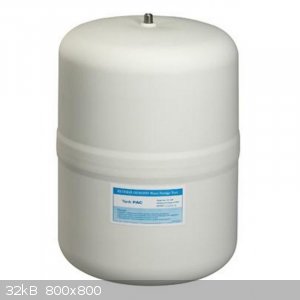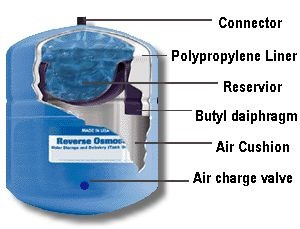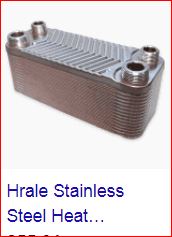
tahallium - 19-7-2020 at 17:38
Why nobody is talking about storing gases in reverse osmosis Pressurized Water Storage Tank?
I have two tanks and the diaphragm pump works perfectly so using tubes I can store gases without high pressure right? Please correct me if I'm wrong
oxygen hydrogen nitrogen carbon dioxide methane...
I can't use chlorine or nitrogen oxides any corrosive gas obviously but nitrogen is useful for flushing the flasks or storage bottles to protect
chemicals like iron II, diethyl ether, copper I, phenol...


CouchHatter - 19-7-2020 at 19:08
The volume pales in comparison to a cylinder, and to flush head space, you need a good minute of gas. It might be a lot of work to keep the tank
filled, depending on your needs.
The air cushion on my water tank gets very weak toward the end of the reservoir. The volume of gas that would voluntarily leave the tank without
charging more air is probably not quite the total diaphragm volume. Then again, it might be different using it with a gas instead of water.
Getting a 20-lb cylinder filled with 95% N is like $60. At a yard sale I got a $50 MIG welder with a 10-lb rusty argon bottle and AirGas accepted that
bottle in place of a $200 deposit. Used gas canisters are abundant in scrap yards, too.
They do make 10-15gal portable air tanks, which I planned to fill with gas in the same way as your idea. But it was not worth the work to fill
compared to the gas it would provide.
RogueRose - 19-7-2020 at 20:27
I'm not sure I'm following you on what and why you want to do this. Also, I'd suggest you don't store H2 in one of these thin tanks. I'm not sure if
commercial H2 tanks have a special lining in them but from what I heard it's not the best idea to store it in thin walled tanks (metal embrittlement -
though I'm not sure if this is mainly during welding or even in tanks).
Also, why would you use one of these tanks when you could use a propane tank? It seems like these might be better suited to this kind of application.
Even better might be an old scuba tank, especially if you are not putting to much pressure in the tank. Many of them fail b/c they can no longer be
filled to 3500 PSI but often are probably fine for much lower pressures like 1-200 PSI (though I don't know for certain).
wg48temp9 - 20-7-2020 at 03:19
The advantage of using a bladder pressure tank is it will push almost all of the gas stored in it out even at 1 bar outlet pressure. But its volume
is larger than its gas storage volume and max pressure is usually limited to about 10bar. You should note that used ones frequently have a leaky
bladder. Round here plumbers tend to replace the whole pressurised boiler even if the problem is just a leaky bladder.
With a gas cylinder unless you apply a vacuum you will be left with tank full of gas at one bar.
PS: Round here you can pickup used pressurised boilers for free. They are source of bladder pressure tanks, stainless steel heat exchanges, water
pumps, air blower, air flow sensors, gas control valves. copper piping, brass bits, cast iron boiler (old boiler, modern boilers have have copper
boilers) and a few square feet insulating ceramic fibre sheet.

[Edited on 7/20/2020 by wg48temp9]
